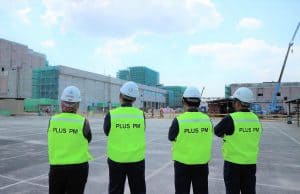High Rise Building Safety Evacuation – Frequently Asked Questions (FAQ)3/3
4月 27, 2015
9. Should my building have any type of exterior escape device?
Items such as escape chutes and controlled descent devices are
permitted to provide escape routes in special structures
such as some towers and special manufacturing environments.
They are not permitted, nor recommended by U.S.-based codes
for commercial and public buildings.
Such devices do not come close to the level of protection
provided by the other code-mandated features.
If the neighboring high-rise building is on fire,
should my building be evacuated?
Not during a typical fire. You should remain vigilant and determine
if there is some onset or change in conditions that could result
in your building being threatened by the adjacent fire.
In such cases, emergency personnel should have adequate time to order
such evacuations.
10. Will building egress systems work in a terrorist attack?
Society has not demanded of its public officials that they enact
laws that would require the expenditure of almost unlimited
amounts of money to protect against all foreseeable
and unforeseeable hazards. In reality,
there may simply be no physical way to provide such protection,
even with unlimited funds. Prior to the September 11, 2001 attack,
a suicide pilot at the controls of a Boeing 767 aircraft
would not have appeared on anyone’s list of credible or foreseeable
design hazards.
In 1945, the pilot of a B-25 two-engine bomber became disoriented in
heavy fog and crashed into the Empire State Building
on a Saturday morning when the building was sparsely populated.
Flaming gasoline from the 1400-gallon tanks ignited and 14 persons
died and 26 were injured.
When the World Trade Center towers were built in 1970,
they were designed to withstand the impact of a Boeing 707 aircraft
— the largest aircraft being flown at that time. The Boeing 767
aircrafts used in the September 11 attack were considerably
larger and carried nearly 20,000 gallons of jet fuel that
would have carried the planes across the country to the West Coast
without refueling.
Current building evacuation or relocation procedures consider the
need to move occupants from harmful way with a fire that grows at
a very predictable way at a rate that is typical to the anticipated
fire hazard in the building.
11. My building has written evacuation procedures.
Are they adequate for any emergency that may occur in my building?
It is highly likely that the procedures are adequate for all emergencies.
In our society, we plan on events that are likely to happen in a building
or structure.
In large part, evacuation procedures are geared towards an accidental
fire occurring in a building.
As long as your procedures make clear to you the actions you are to take,
and when to take them, that is in essence what you are looking for.
Although not mandated for all buildings, encourage your employer to stage
a mock drill once a year.
If you are on the upper floor of a high-rise building,
this may be a good opportunity to practice and experience your plan.
12. Many of these procedures are based on typical events.
What happens when the event is not typical?
As with any situation in our daily lives,
you are ultimately in control of your fate to a great degree.
Thus, you are largely responsible for your own personal safety based
upon the circumstances.
Detailed procedures, verbal instructions and even past experience
may not be adequate to help you deal with extraordinary events.
RED, the universal color for danger can be used to help you in such circumstances.
React: Take any indication of smoke,
fire or other potentially threatening situation seriously.
Activation of building fire alarms, smell of smoke, visual indication of flames,
warning from other occupants, arrival of the fire department are some of the
attributes that may signal an imminently dangerous situation.
Evaluate: You must judge the level of threat.
This includes confirming evidence or presence of smoke or fire;
judging the conditions in your immediate area; self-judgment of your physical
ability to relocate or evacuate;
evaluation of the needs and abilities of others who may need assistance;
consider additional information being received.
Decide: There are only two, but difficult choices:
Follow your plan and immediately leave the building or follow your plan
and stay where you are, or descend to the designated level below the fire floor
and be prepared to take protective/defensive action.
In this case, anticipated action may include alerting the fire department of
your location, seal doors, windows and vents that lead into your space.
Do not break out the windows. Be prepared to wait for a considerable time period
(at least one hour) if you contemplate rescue by the fire department.
This process is iterative.
It is not only done at the first hint of a dangerous situation.
It is a process that the individual must manage and it needs to be repeated
until the danger has passed or, if total building evacuation is in order,
when that action is completed.
High rise office buildings are designed to be safe,
but if a full-scale evacuation is required,
employees need to be ready to act quickly and take responsibility for their own safety.
Plus PM Consultant Sdn. Bhd.
Malaysia Based Japanese Project Management and Construction Management Company
関連記事
ほかのBlogを見る



